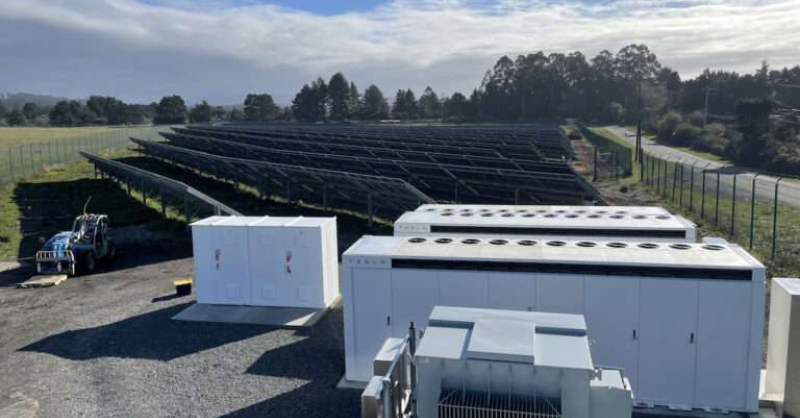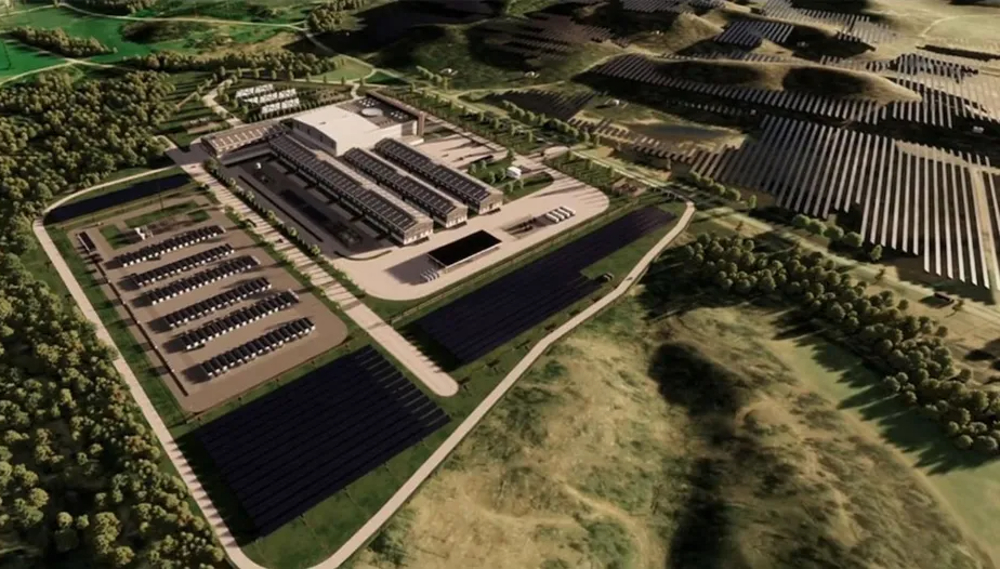
Re-using existing grid connections !
One challenge in building a new electrified energy intensive production facility is getting access to the (hopefully green) electricity. Has a West Virginia project found the solution?
To decarbonise our economy we need to electrify (almost) everything, including heavy industry. One challenge in building a new electrified energy intensive production facility is getting access to the (hopefully green) electricity. In theory it's easy. You speak to your local electricity utility and they 'just hook you up'. In practice it's much more time consuming than that. Just another reason for some companies to choose to stay with gas?
One solution is to build your new processing plant where there is already a good grid connection. And if you also build your own microgrid (solar plus batteries), and just use the grid for a small proportion of your energy needs, the process is even easier. Which means you can get your processing plant up and running more smoothly. And get real certainty about your long term cost of electricity.
Easy to say, but hard to do. But is it?
This is why a recent Clean Technica article caught our eye. They wrote about the new Timet titanium melting plant in West Virginia, that will use a co-located solar and battery farm to power their electric powered furnaces. It is believed to be one of the first projects in the US to directly power a large industrial facility using solar plus storage technology.
Why does this matter? Electrifying heavy industry is one of the bigger decarbonisation challenges. For some processes heat pumps are the answer, but where you need high temperatures you probably need some form of electric furnace. Which needs a lot of electricity - and we all know how hard it is to get new grid connections !
This is a What Caught Our Eye story - highlighting reports, research and commentary at the interface of finance and sustainability. Things we think you should be reading, and pointing out the less obvious implications. All from a finance perspective.
It's free to become a member ... just click on the link at the bottom of this blog or the subscribe button. Members get a summary of our weekly posts, including What Caught Our Eye and Sunday Brunch, delivered straight to your inbox. Never miss another blog post !
Timet to power new titanium plant with solar & batteries.
Titanium is an important (but expensive) metal, especially in the aerospace industry, where its strength and lightness are incredibly useful. Making titanium is broadly a two part process. Turning the ore into what is known as titanium sponge is done using the Kroll process. And then the sponge, plus scrap titanium, is melted and turned into useful products. It's this second process that Timet is going to do at the site in West Virginia.

As the article highlights, the new plant will include two types of electricity-driven furnaces to generate intense heat for melting the titanium sponge and scrap. Initially, the melting plant is expected to need around 18 megawatts of power to operate, before ramping up to its full capacity of 106 MW by the end of 2027. The solar microgrid will scale up in lockstep with Timet’s operations.
The project has a couple of obvious advantages. The first is that it's being built on a 2000 acre site previously used by Century Aluminum to make (yes, you guessed it) Aluminium. This is another production process that needs a lot of (preferably cheap) electricity. So we assume there is already a decent grid connection. As the article says, when the aluminum plant was shut down in 2015 one reason given was the high cost of energy.
And the other advantage is that both Timet and the company building the solar/battery farm (BHE Renewables) are controlled by one company, Berkshire Hathaway. A company with a proven longer term investing time horizon.
It's going to be interesting to see how much of a template for other high energy process plants this turns out to be. Construction has already started, with the first melting due in early 2025, ramping up to full production by the end of 2027.
It's worth remembering that as a decarbonisation project, this only tackles the second part of the titanium production process. Making the titanium sponge is very energy intensive. And it produces a lot of CO2, from the chemical process, not from the burning of fossil fuels to create the energy (like steel). The Clean Technica article summaries the process well ...
"To make titanium sponge, titanium ore is heated to 1,800 degrees Fahrenheit and reacted with chlorine gas and carbon-rich petroleum “coke.” This step yields a liquid chemical, titanium tetrachloride, and also produces carbon dioxide as a byproduct in much the same way as blast furnaces used for making iron do. The liquid chemical then undergoes another treatment using molten magnesium. "
A subject for another day.
A last thought
Regular readers will know that we talk a lot about the need to decarbonise many of our industrial production processes. Why, because together they contribute roughly a third of our global greenhouse gas emissions. And on their own some of the big ones, such as steel making, and cement production, are as material as transport. But, they get a lot less attention, partly because the processes are tougher to implement (and maybe less glamorous?). Which is why templates such as the West Virginia plant, could be really important.

And as the Clean Techncia article notes - electricity utilities should watch out. They do not normally have a monopoly on providing electricity. There is nothing to stop consumers, especially industrial ones, from deciding to produce their own electricity. Or at least enough to meet the bulk of their needs. And only use the grid as a backup. As solar and batteries get cheaper, that is a real possibility.

Please read: important legal stuff.



